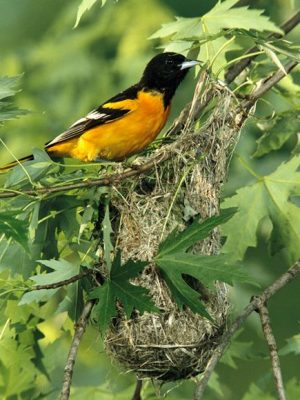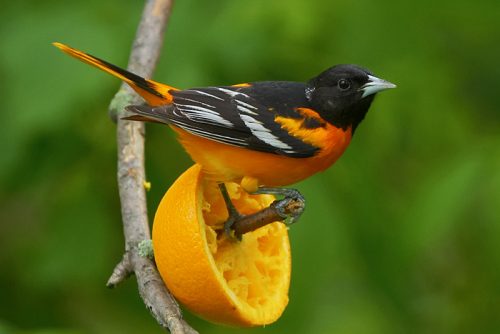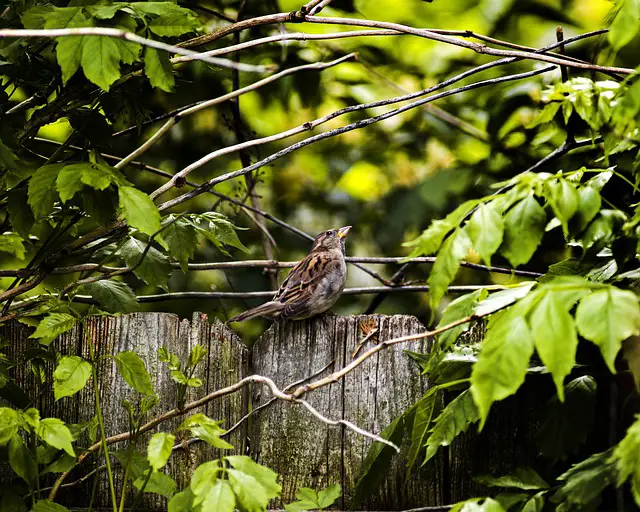The Baltimore oriole (Icterus galbula) is a small North American bird and it earns its name because of its coat that reminds us of the Lord of Baltimore. It is a migratory species. The bird is primarily known for its sweet song. The Baltimore oriole has got brilliant bright-colored plumage. They are often heard than seen.
Oriole Bird Facts
Anatomy
- The adult oriole averages 17–22 cm (6.7–8.7 in) in body length with the wingspan measuring up to 23–32 cm (9.1–12.6 in).
- It has a slender body and pointed tail. The shoulders are orange while the wings are black and white. Adult males are mainly recognized by their jet black head and tail.
- The male bird has got some white markings on its body. Baltimore oriole has sharp black bill.
- Baltimore oriole weighs up to 22.3 to 42 g (0.79 to 1.48 oz).
- It is the official state bird of Maryland.

Geographic Range
- During spring or summer they are the common residents of the eastern and central United States.
- They occur in the central Mississippi, northern Georgia, Minnesota, and Alabama. Orioles are also found as far south as Mexico and northern South America.
Habitat
- Baltimore orioles are likely to breed in the leafy deciduous trees including forest edge, tree stands along rivers, open woodland, and orchards. They also make habitats in backyards or parks.
- They will never make homes in deep forests. Orioles are typically found singing in the tree-tops.
- In time orioles have adapted to living in secondary habitats.
Behavior
- The male orioles are thought to utter loud singing sounds and it echoes in many parts of the eastern United States. Adult males will perch on a tree canopy to sing.
- In the wild, the maximum lifespan of Baltimore oriole is 11 years and 7 months whereas the captive orioles live up to 14 years.
Feeding Ecology & Diet
- The Baltimore oriole typically forages in trees and shrubs. They are thought to catch flying insects even during flight.
- Baltimore oriole’s diet consists of insects, nectar, and berries. Prominent among the prey is forest tent caterpillar moth. The caterpillar is mostly consumed in the larva stage.
- In fruits, they seem to rely on dark colored ripe fruit.
- They are often found in high trees looking for insects and flowers.

Reproductive Biology
- Baltimore orioles are likely to live a solitary life except during the breeding season when the mother is with her chicks.
- It pairs for life. The female alone builds a nest. The oriole’s nest is mainly built with materials such as maples, elms, willows, and cottonwood.
- They build nest at a height of about 7 to 9 m (23 to 30 ft) above the ground.
- The clutch consists of 3 – 7 bluish white eggs. Each of the eggs measure 2.3 cm × 1.6 cm (0.91 in × 0.63 in).
- The incubation lasts about 12 – 14 days. Both parents regurgitate the food to their nestlings but the female wills stop feeding them after 14 days.
- Predators of Baltimore oriole include black-billed magpies, common grackles, blue jays, tree squirrels, American crows, great horned owls, peregrine falcons, barn owls, and domestic cats.
Conservation Status
- Least Concern





